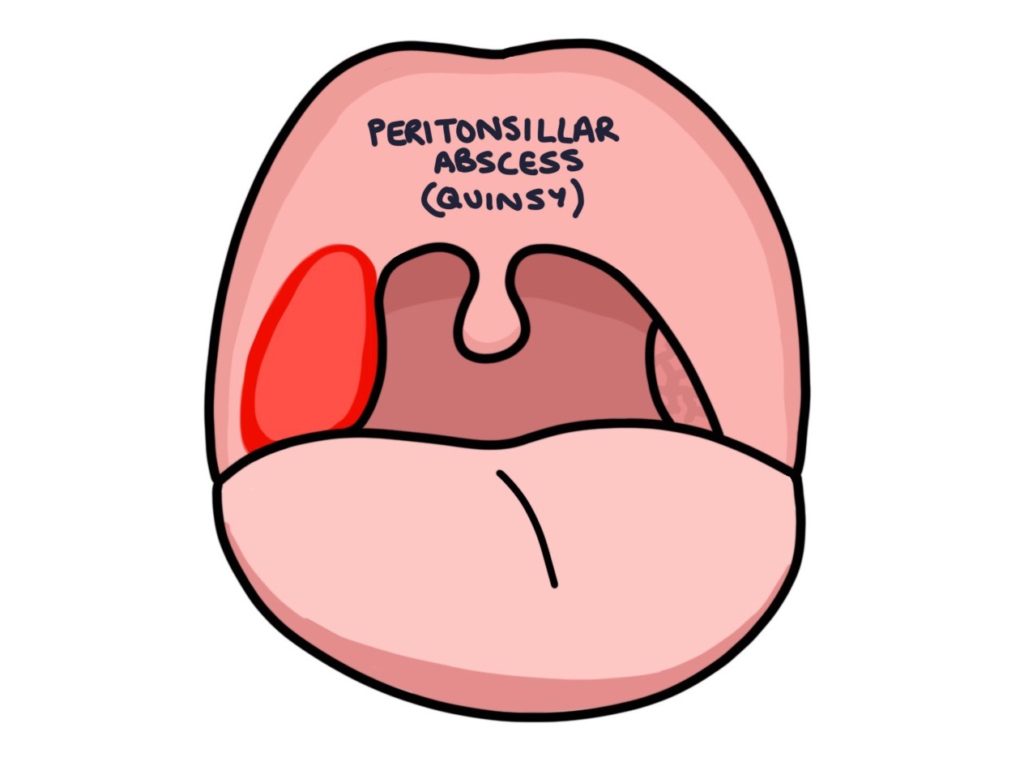Quinsy is the common name for a peritonsillar abscess. Peritonsillar abscess arises when there is a bacterial infection with trapped pus, forming an abscess in the region of the tonsils.
Peritonsillar abscesses are usually a complication of untreated or partially treated tonsillitis, although it can arise without tonsillitis.
Quinsy can occur just as frequently in teenagers and young adults as it does in children, unlike tonsillitis which is much more common in children.

Presentation
Patients present with similar symptoms to tonsillitis:
- Sore throat
- Painful swallowing
- Fever
- Neck pain
- Referred ear pain
- Swollen tender lymph nodes
Additional symptoms that can indicate a peritonsillar abscess include:
- Trismus, which refers to when the patient is unable to open their mouth
- Change in voice due to the pharyngeal swelling, described in textbooks as a “hot potato voice”
- Swelling and erythema in the area beside the tonsils on examination
Bacteria
Quinsy is usually due to a bacterial infection. The most common organism is streptococcus pyogenes (group A strep), but it is also commonly caused by staphylococcus aureus and haemophilus influenzae.
Management
Patients should be referred into hospital under the care of the ENT team for incision and drainage of the abscess under general anaesthetic.
Quinsy typically has an underlying bacterial cause, therefore antibiotics are appropriate before and after surgery. A broad spectrum antibiotic such as co-amoxiclav would be an appropriate choice to cover the common causes, but local guidelines will guide antibiotic choice according to local bacterial resistance.
Some ENT surgeons give steroids (i.e. dexamethasone) to settle inflammation and help recovery, although this is not universal.
Last updated January 2020
